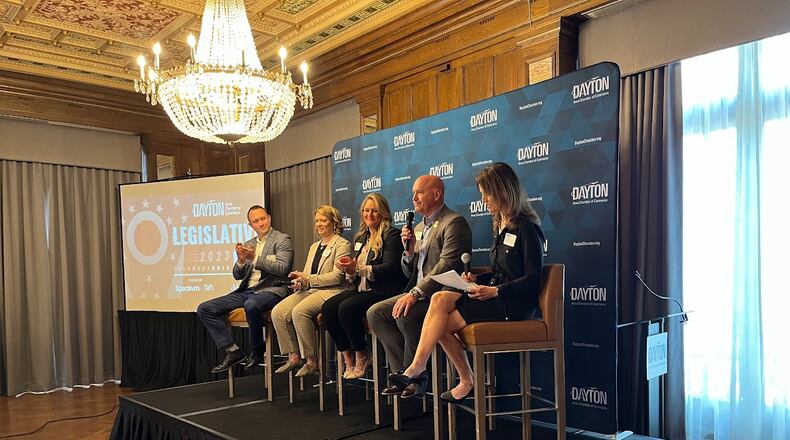This comfort with veterans is increasingly common. Ohio leaders should stop calling Ohio a “veteran-friendly state” and simply proclaim “We’re a veterans state,” suggested State Rep. Bernard Willis, a Springfield Republican and Air Force veteran.
Veterans are looking for good health care, a low cost of living and more. Willis said the Dayton area already has a military-focused “mindset” that embraces veterans.
“It’s one of the things Dayton region does well,” he said. “They work very closely with Wright-Patterson (Air Force Base). You typically show up into a community of veterans who are already working there.”
However, speakers at the chamber’s event identified obstacles. Chief among them: Child care cost and availability.
It is quality child care that often bridges the gap between the job openings employers have and the workers available to fill them, said Lynanne Gutierrez, chief operating and policy officer with Groundwork Ohio, and Robyn Lightcap, executive director of Preschool Promise in Dayton and Montgomery County.
“If families have access to high-quality child care, they are much more likely to come to work,” Lightcap said.
Even if a family can afford child care, availability in some locales may be spotty, Gutierrez said.
Lyndy Rohe, development director with the National Military Family Association, said child care fees are a “big barrier” to military families burdened with moves to new duty stations every several years.
“They don’t live around (extended) families,” Rohe said. “They don’t have help.”
Steve Stivers, chief executive of the Ohio Chamber of Commerce, told listeners that child care availability remains an increasingly important issue in general, especially for employers with a stake in drawing new workers.
Rohe advised employers to get to know active-duty military families before they make the transition to civilian life. And she encouraged businesses to hire military spouses, who may bring surprising capabilities.
“They are juggling so many balls and wearing so many hats,” Rohe said. “You’ll be amazed at” what they can accomplish.
Like Rohe’s family, Shawnee Williams, who worked with the 711th Human Performance Wing at Wright-Patterson, chose Dayton as place to retire.
She advised employers to have a “landing pad” and a well-defined role to play for veterans who join their organizations.
“We’re looking for the cost of living,” Williams said. “We’re looking for the innovation.”
Alexander Hardy, president of Valerio Solutions and a former Army officer, said his wife made the “business case” for moving to Dayton.
“Once I got here, when I started Valerio, it was absolutely wonderful with all the support. ... Here, (everyone) is a partner, everyone wants to support,” he said.
In general, employers have made “great strides” in welcoming veterans, Willis and others said.
“Culture is ultimately the most important thing that will keep them here,” Willis said.
The new mission will add 90 personnel to the approximately 35,000 military civilian employees at Wright-Patterson, already the largest employer at a single site in the state of Ohio
About the Author

